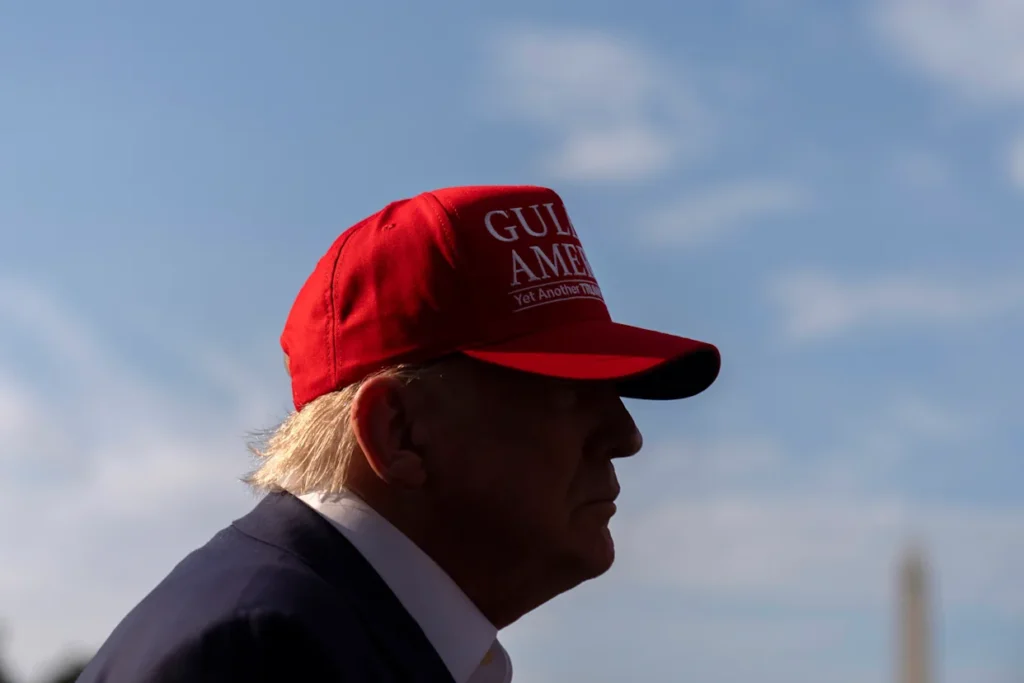In a move that could have wide-reaching implications for federal oversight and executive authority, former President Donald Trump has taken his legal challenge against the Consumer Product Safety Commission (CPSC) to the U.S. Supreme Court. The case stems from Trump’s effort to remove members of the independent agency, which he claims are protected by unconstitutional restrictions that prevent the president from firing them at will.
This legal battle, now heading to the nation’s highest court, raises critical questions about the balance of power in the federal government and the future of consumer protection in America.
What Is the Case About?
At the heart of the Trump Supreme Court consumer safety case is the debate over whether presidents have the authority to remove commissioners of independent federal agencies such as the CPSC, even if those positions are designed to be non-political and shielded from executive influence.
The Consumer Product Safety Commission is a small but powerful agency responsible for ensuring that everyday products — from children’s toys to kitchen appliances — are safe for public use. The commissioners of the agency are appointed for fixed terms and are not typically removed unless there is proven misconduct.
However, Trump and his legal team argue that this structure violates the president’s constitutional power to oversee the executive branch. Their position echoes previous legal challenges targeting similar independent commissions, such as the Federal Trade Commission (FTC) and the Securities and Exchange Commission (SEC).
Why Trump Wants to Remove the CPSC Commissioners
During his presidency, Trump clashed with several independent agencies whose members were appointed during previous administrations. These agencies are intentionally designed to be independent of political pressures, giving them a degree of insulation from changes in the White House.
Trump’s legal argument suggests that such insulation is too strong and undermines the president’s ability to control the executive branch. His team is challenging the “for-cause” removal protections that shield CPSC commissioners from being fired without a clear justification.
By seeking the right to remove these commissioners at will, Trump is testing the limits of executive power — a theme that has run throughout his time in office and beyond.
Background: Understanding the Consumer Product Safety Commission
The Consumer Product Safety Commission, created in 1972, plays a crucial role in protecting the public from unsafe products. Its primary duties include:
- Investigating reports of defective or hazardous products
- Issuing recalls when necessary
- Enforcing safety standards across various consumer goods
- Working with manufacturers to improve product safety
While the agency is small, its impact is significant. The CPSC has recalled millions of unsafe products over the decades, from flammable children’s pajamas to faulty electronics.
The agency’s commissioners are nominated by the president and confirmed by the Senate, but once appointed, they serve staggered seven-year terms and can only be removed “for cause” — such as misconduct or neglect of duty.
This structure is intended to ensure stability and independence, allowing commissioners to focus on public safety rather than political agendas.
The Legal Argument: Executive Power vs. Independent Oversight
Trump’s legal challenge hinges on a broader constitutional question: Can the president fire leaders of independent agencies who are protected by fixed terms and “for-cause” removal rules?
Trump’s attorneys argue that these rules restrict the president’s ability to ensure that federal agencies are carrying out their duties in line with the administration’s priorities. In their view, the president must have the authority to remove commissioners who do not align with the executive branch’s direction — even in agencies like the CPSC.
This argument builds on the Supreme Court’s 2020 decision in Seila Law LLC v. Consumer Financial Protection Bureau. In that case, the Court ruled that the president could remove the director of the Consumer Financial Protection Bureau (CFPB) at will, declaring the agency’s leadership structure unconstitutional.
Trump’s team sees that ruling as a precedent that should apply to other similar commissions.
Arguments from the Other Side
Opponents of Trump’s case — including public safety advocates and legal scholars — warn that weakening the independence of regulatory agencies like the CPSC could put the public at risk.
Their main points include:
- Eroding agency independence would make it harder for regulators to enforce safety standards without political interference.
- If the president can remove commissioners for political reasons, agencies may prioritize political interests over scientific evidence and consumer protection.
- Fixed terms and “for-cause” protections are a safeguard against corruption, cronyism, and manipulation.
In short, critics argue that allowing the president to remove CPSC commissioners at will would undermine the agency’s core mission and shift the balance of power too far toward the executive branch.
What the Supreme Court’s Decision Could Mean

The outcome of the Trump Supreme Court consumer safety case could have long-lasting implications for federal oversight and the role of independent agencies in the United States.
If the Court Rules in Trump’s Favor:
- Presidents (current and future) could gain the power to fire commissioners from a range of agencies, including the CPSC, FTC, and SEC.
- The ruling might lead to greater political influence over agencies meant to remain neutral and science-based.
- It could create a “domino effect” where other independent agencies are forced to revise their structures.
If the Court Rules Against Trump:
- The current structure of the CPSC and similar commissions will remain intact.
- The ruling would reinforce the importance of checks and balances in federal governance.
- It could limit executive power and preserve agency independence.
What Legal Experts Are Saying
Legal scholars are divided over the issue, though many agree the case represents a pivotal moment in constitutional law.
Supporters of Trump’s Position:
- Argue that too many federal agencies operate without sufficient accountability.
- Believe the president must have the final say over who runs the executive branch.
- See the case as a continuation of restoring presidential authority.
Critics of Trump’s Position:
- Emphasize the need for independent oversight in areas such as public safety, finance, and environment.
- Warn that letting presidents fire commissioners freely could lead to unstable, politicized agencies.
- Say this could set a dangerous precedent that weakens institutional protections.
Public Reactions and Political Ramifications
The case has sparked strong reactions across the political spectrum. Supporters of Trump view this as a necessary battle to curb bureaucracy and reclaim executive power, while opponents see it as a threat to consumer protection and regulatory integrity.
The Biden administration has not yet issued a formal comment on the case, though it is expected to defend the current structure of the CPSC. Democratic lawmakers have warned that Trump’s challenge could weaken safety standards and allow dangerous products to flood the market.
Meanwhile, consumer advocacy groups such as Public Citizen and the Consumer Federation of America have filed amicus briefs urging the Court to uphold the commission’s independence.
Conclusion: A Defining Test for Executive Authority
The Trump Supreme Court consumer safety case is about much more than just the CPSC. It’s a case that could redefine how America’s federal agencies function, how much power the president really has, and whether public safety agencies can truly operate without political influence.
As the Supreme Court prepares to hear arguments, the eyes of the legal, political, and consumer safety worlds will be watching closely. Whether this becomes a landmark decision or a reaffirmation of the status quo, the ruling will help shape the future of government accountability and consumer protection in the United States.
Read Next – Pentagon Escapes Trump Budget Cuts Despite Crypto Chaos





